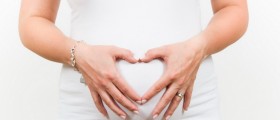
The factors described above contribute to Pelvic Girdle pain. Some of these causes are directly related to the size of your baby and uterus you are unlikely to suffer from postural problems early on in pregnancy, because your baby is still too small, and your center of gravity doesn't change until you start showing. Hormonal changes do occur early on in pregnancy, and some women get Pelvic Girdle Pain as early as the first trimester. On the whole, it is more of a late-pregnancy ailment, however. The symptoms are pain in your pelvis (from the vaginal area to the lower abdomen), hips, and even thighs. Some women hear a clicking noise around their pelvic bones when they move around.
The pain of PGP comes in waves, originating from the pelvis outwards, and moving around tends to be uncomfortable. PGP ranges from mild and occasional to severe. In extreme cases, it can make pregnant women unable to stand up and walk. If you have any of the symptoms that could point to PGP, do discuss them with your doctor. For most women, Pelvic Girdle Pain resolves itself after birth. You might discuss exercises for pain relief with your doctor, as well as postural improvements. It is possible that your healthcare provider will advise you to rest as much as possible, and limit physical activity. Sometimes, you need pain killers to help you deal with chronic pain.
- www.nhs.uk/conditions/pregnancy-and-baby/pelvic-pain-pregnant-spd/
- www.nhs.uk/news/pregnancy-and-child/pregnant-women-take-two-months-sick-leave/
- Photo courtesy of U.S. National Cancer Institute by Wikimedia Commons: en.wikipedia.org/wiki/Iliac_fossa#/media/File:Pelvic_girdle_illustration.svg

















Your thoughts on this
Loading...